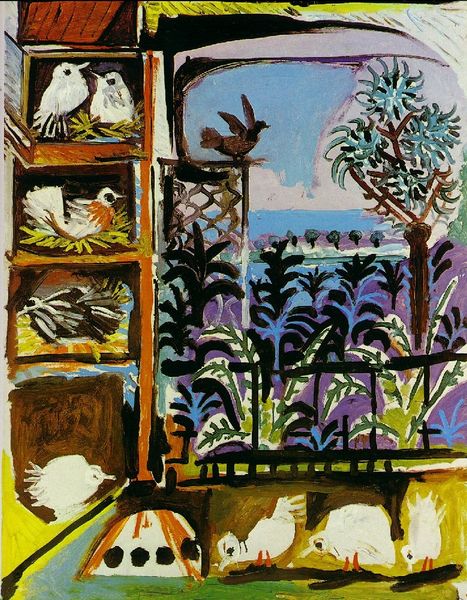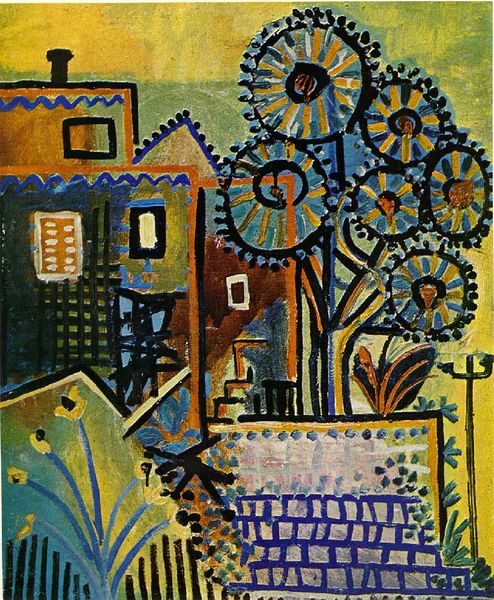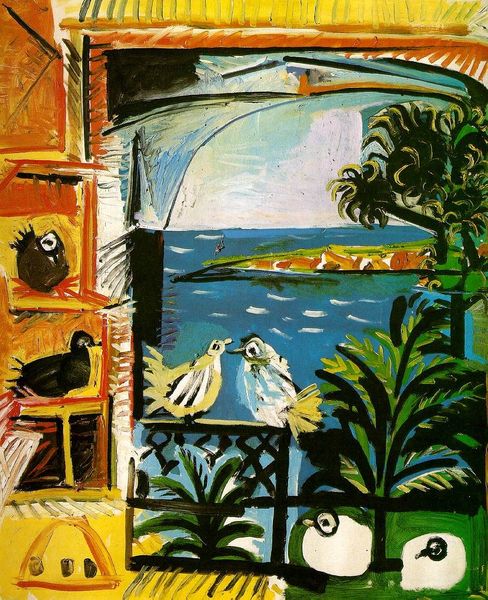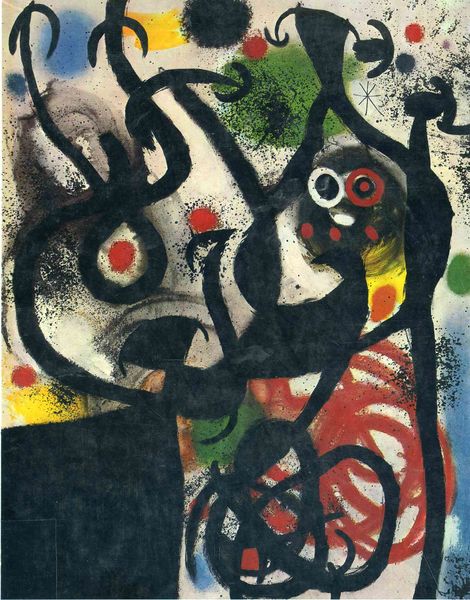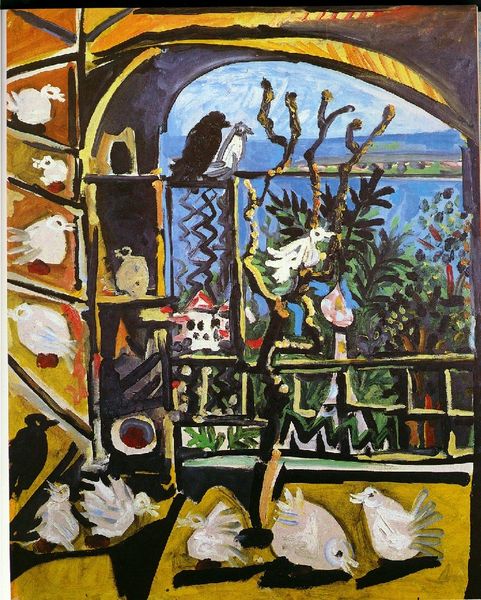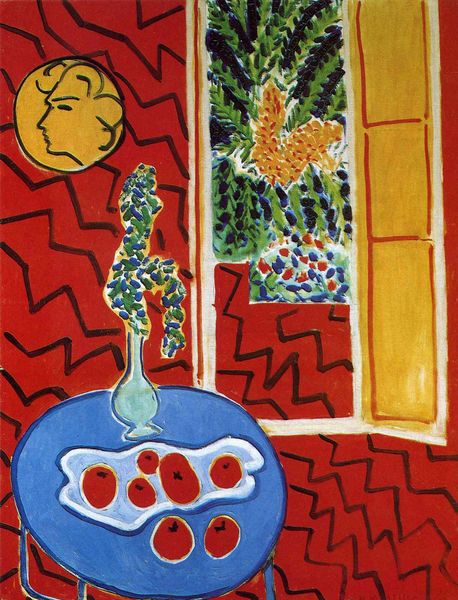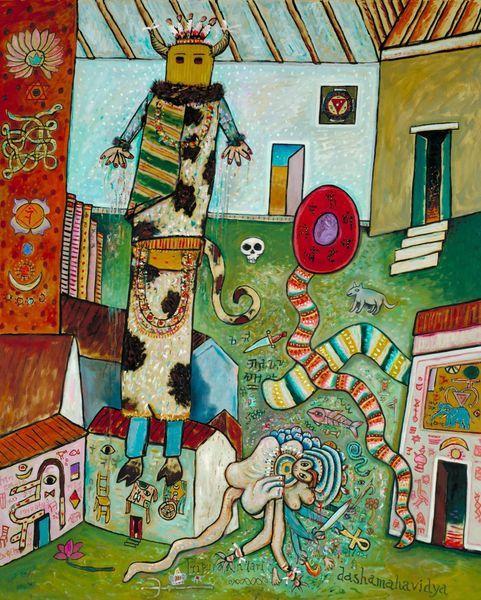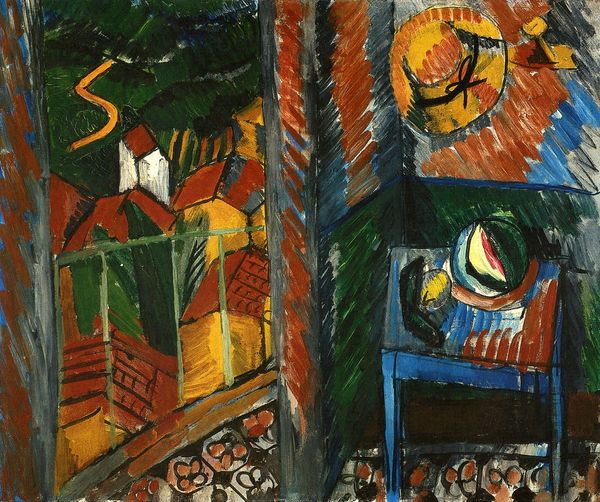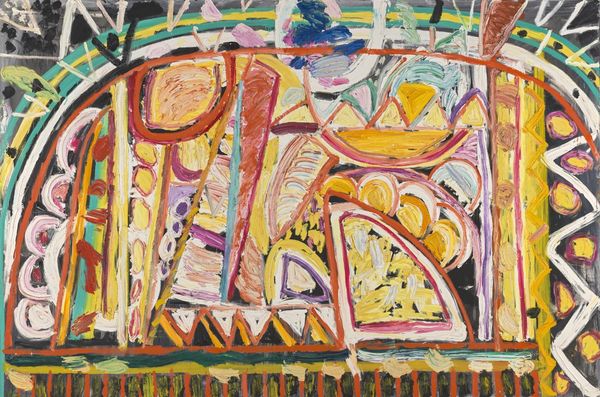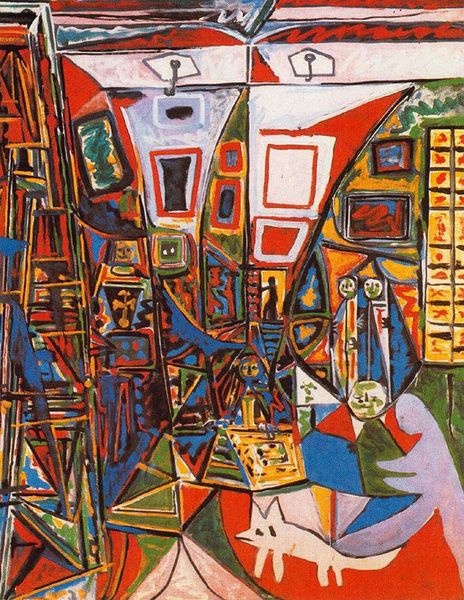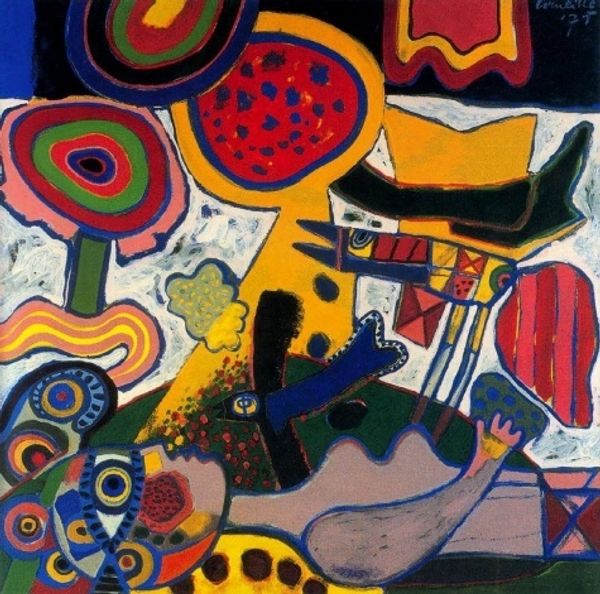
painting, acrylic-paint, impasto
#
cubism
#
abstract expressionism
#
painting
#
landscape
#
acrylic-paint
#
figuration
#
impasto
#
modernism
Copyright: Pablo Picasso,Fair Use
Curator: Before us hangs Pablo Picasso’s 1957 painting, "Studio (Pigeons) (Velazquez)," rendered in acrylic with an impasto technique. What strikes you initially? Editor: An overwhelming feeling of enclosure. The thickness of the paint and the dark outlines box everything in, despite the implied outdoor scene. It feels weighty, almost suffocating. Curator: I note how Picasso dismantles the conventional still life and interior genre. See how he's abstracted the window, layering planes, collapsing the distinction between inside and outside? He subverts the function of the window itself, no longer merely a portal. Editor: True. It brings up questions of labor, doesn't it? How much energy and material goes into creating the illusion of depth and perspective. And look at that thickly applied paint. It’s an excess, a deliberate flaunting of material resources. Curator: Exactly. It challenges the historical concept of 'truth' in representation. Consider, too, the flattened perspective and simplified forms, referencing Cubism's fundamental rejection of single-point perspective and mimetic accuracy. The artist doesn't show us reality; he gives us its dissected essence. Editor: Those impasto surfaces invite a sensory awareness, emphasizing the physical presence of the medium and the manual processes in painting the work. There’s also the allusion to the older master's practice: is he critiquing the traditional hierarchy between 'high' art and labor, even as he honors Velazquez? Curator: A productive interpretation! By reimagining Velazquez through his unique lens, Picasso destabilizes historical narratives. The work then becomes an active dialogue with the history of art. Editor: It's fascinating to contemplate the value judgment inscribed on art practices. This impasto becomes almost violent, and it compels us to assess its aesthetic labor versus its traditional beauty and narrative qualities. Curator: The emotional impact of that impasto, the texture and construction – that, too, holds meaning, beyond its tactile attributes. The viewer engages intellectually with how it changes formal elements in the image plane. Editor: Ultimately, it is about what happens when industrial modes and visual tradition interweave to shape material realities, as demonstrated so beautifully, I must add, here. Curator: A final analysis underscoring the materiality offers intriguing perspectives to appreciate these formal resolutions Picasso pursued. Thank you.
Comments
No comments
Be the first to comment and join the conversation on the ultimate creative platform.
